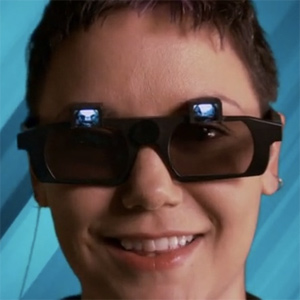 NEWS
NEWS
 NEWS
NEWS
 NEWS
NEWS
![]() It is true that there are many augmented reality projects, but the question is: do any advanced, practical augmented reality platforms exist today? The answer may be CastAR, a platform developed by none other than Jeri Ellsworth and Rick Johnson, two former Valve developers.
It is true that there are many augmented reality projects, but the question is: do any advanced, practical augmented reality platforms exist today? The answer may be CastAR, a platform developed by none other than Jeri Ellsworth and Rick Johnson, two former Valve developers.
Valve has never hidden its intention to seek to create new game controllers, the proof is with the recently unveiled Steam Controller, touchpads and SteamOS. At the beginning of the year, Jeri Ellsworth and Rick Johnson, started working on the creation of a prototype augmented reality system for Valve. The project did not please Valve, and it was abandoned.
The two then left the company and formed Technical Illusion. In May, they started working on the AR system called CastAR–a 3D augmented and virtual reality headset. The principle is quite simple and is divided into two main parts–the Magic Wand and the RFID Tracking Grid. The Magic Wand is new kind of controller that lets you position things in space and control them with a joystick, all with one hand. The RFID Tracking Grid allows you to uniquely identify, track, and augment physical objects (such as miniatures, cards, and board game pieces) across the surface.
The frame itself carries two micro-projectors whose image is reflected by a reflecting surface, a shutter charge to sort the images for the left or right eye (according to the principle of active 3D) and camera motion tracking.
The CastAR has been in development for the past 18 months and to make the AR system to mass market, Ellsworth and Johnson launched a Kickstarter campaign. The goal of the campaign is to raise $400,000 by November 14, but we do not believe that they will have much trouble in making it, because at the time of writing this report it has already been accumulated nearly $282,500 with 30 more days to go for the campaign to end.
The Prototype
CastAR is a projected augmented reality system that displays holographic-like 3D projections right in front of you. Star Wars: Episode IV – A New Hope sparked our imaginations of what might be possible in the future by showing R2-D2 and Chewbacca playing a holographic 3D chess-style game. It has taken nearly 35 years since the film was released for this technological dream to come to reality, but with castAR, that reality can be yours, the campaign page says.
Presented for the first time last August on the occasion of the San Francisco Maker Faire, CastAR takes the form of a simple pair of glasses topped with two mini-projectors, one for each eye. The idea behind these glasses is to cross the reality and virtual worlds to achieve augmented reality environments. The mini projectors send images in 720p with a refresh rate of 120Hz, while infrared detectors will be able to recognize the user’s movements with high accuracy.
Finally, a motion sensor is responsible for detecting the position of the head, the movements of the various parts on the board. According to the designer, the movements of a magnitude of less than 1 mm can be seen. An optional controller is also present: the Magic Wand. This serves both to handle and to interact with the game by moving above the RFID Tracking Grid.
CastAR is a very interesting idea that uses augmented reality and virtual reality differently than other projects of this type. Thanks to the innovative technology at a surprisingly low price, it allows the user to see something like a holographic table. You can celebrate around the table to see the displayed objects from different angles. Moreover, some people may look at the table at the same time from different sides, seeing the picture from different angles. What differentiates CastAR from real hologram, it is necessary to use additional accessories in the form of spectacles.
Currently glasses communicate with your PC via USB cable, but work is already underway on other forms of connection including mobile devices.
The Competitors
Virtual reality is in demand these days, thanks to the much talked about Oculus Rift system. With a Kickstarter campaign, Ellsworth and Johnson want their AR and VR goggles castAR ahead and get together enough money to get the product to the beyond prototype status.
CastAR should allow users, games and graphics to experience three-dimensional effects. Unlike the competitors Oculus Rift, Ellsworth and Johnson have also announced accessories that can expand the possibilities of castAR in a cheaper price.
Microsoft Research has created things like IllumiRoom, and obviously we cannot forget Google Glass. But castAR moves one step ahead where the augmented reality meets real world with virtual objects placed in the context of the real. Using accessories that one can attach to CastAR glasses, one can go from being “augmented reality” glasses to be full “virtual reality” glasses where the world around you disappears and you only see the virtual reality.
CastAR technology is very easy to integrate thanks to a proprietary SDKs. Developers can also create games for the hardware within Unity, while the firm has said it is in contact with a number of engine providers about supporting the hardware.
The Starter Package of glasses costs $189 (unlike the $300 price tag for Oculus Rift) and includes a 1×1-foot projection surface. Pre-order the CastAR glasses and all related peripherals can be issued at the price of $355.
THANK YOU